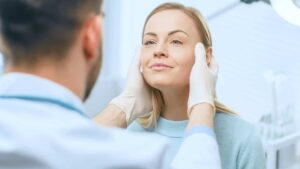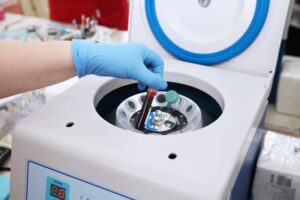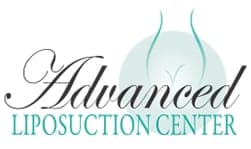PRP Injection
How is PRP injection used in Regenerative Medicine?
PRP Injection Facial Rejuvenation is now available at Advanced Liposuction Center!

Platelet-Rich Plasma (PRP Injection Facial Rejuvenation), similar to a vampire facial, is a combination of microneedling and the application of Platelet-Rich Plasma. Used in sports medicine for years, this liquid gold contains multiple factors that stimulate the production of new blood vessels, elastic fibers and collagen. By stimulating collagen and elastin growth, PRP has been shown to kick the healing process into overdrive.

Your own blood is gently drawn by our phlebology specialist and centrifuged to extract the PRP. After a topical numbing cream has done its job to get one comfortable, the patient then undergoes a microneedling treatment. The applied PRP and microneedling combination allows for deeper penetration and optimal results to reduce fine lines and wrinkles, shrink pores, and leave your skin glowing, usually in less than a week.
What is Platelet Rich Plasma (PRP) and how is it made?
The body is designed to heal itself. Ideally, a patient’s blood brings everything that’s needed for healing to occur exactly where it’s needed. The injured area is flooded with chemicals which call attention to the damaged tissue. The body mounts its normal regenerative response, and the tissue heals itself.

It doesn’t always heal completely or as well as possible, however. This is often the case in chronic ligament and tendon injuries. These tough, ropey structures have a naturally poor blood supply and can have difficulty healing on their own.
Platelet Rich Plasma is exactly what it sounds like. To prepare the PRP solution your doctor will use, they will first take a sample of your blood. Usually only 1 or 2 vials (vacutainers) are needed.
This whole blood is then processed using a centrifuge, a medical device which spins the vials at high speeds. In this way the contents of the blood are separated into distinct layers after only a few minutes. The doctor can then harvest the thin, shiny, platelet rich layer near the middle of the vial using a syringe. When these highly concentrated platelets are added to plain plasma the final PRP solution is ready for immediate use. It can contain upwards of 1,2000% the amount of platelets found in normal, unprocessed blood.
What, exactly, makes up the solution used in Platelet Rich Plasma (PRP) injections?

To date, there are no universally acknowledged guidelines stating what each milliliter of Platelet Rich Plasma fluid must contain. This is due in large part to the natural variations in each individual patient’s blood. Remember that PRP solution is a patient-sourced blood product, not a pharmaceutical preparation.
Research has instead shown that platelet-rich solutions containing between 3.5 and 9% platelets by volume to be the most consistently effective. While higher concentrations have been used there does not appear to be any appreciable additional benefit past this point. While not experimentally demonstrated, it is believed that PRP solutions containing extremely high concentrations of platelets will be less effective.
Remember that PRP isn’t a pharmaceutical drug such as cortisone, a commonly injected liquid steroid. This medication comes in pre-measured vials containing a precise amount of the active drug, and by law it must be clearly labeled as such. PRP solution is derived entirely from a patient’s own tissue so pharmaceutical laws aren’t relevant.
The role of white blood cells and the immune response in Platelet Rich Plasma therapy.
Platelets are only one of several cell or cell-like bodies found in our blood. White blood cells, or leukocytes, play a central part in the body’s immune response. They’re also active in other important (and related) processes such as inflammation and healing.
What doctors and laypersons alike call “healing” is actually an incredibly complicated undertaking we’re just beginning to fully understand. It is known that white cells contribute to full, complete, normal healing. Yet platelets, other cell types, and literally hundreds proteins and thousands of other chemicals are also involved.
Other considerations for success of PRP:
- General health—individuals who take care of their physical health through diet, exercise, and proper healthcare will receive the best results. This is true of almost any medical intervention. Age is only one of several considerations.
- Immunosuppression—patients with a compromised immune system may receive less of a benefit from PRP. Medications such as corticosteroids should be discontinued before starting PRP. They may be resumed afterwards if needed.
- Nature of injury—for obvious reasons less injury is always better.
What is Platelet Rich Plasma (PRP) and how is it made?
The body is designed to heal itself. Ideally, a patient’s blood brings everything that’s needed for healing to occur exactly where it’s needed. The injured area is flooded with chemicals which call attention to the damaged tissue. The body mounts its normal regenerative response, and the tissue heals itself.
It doesn’t always heal completely or as well as possible, however. This is often the case in chronic ligament and tendon injuries. These tough, ropey structures have a naturally poor blood supply and can have difficulty healing on their own.
Platelet Rich Plasma is exactly what it sounds like. To prepare the PRP solution your doctor will use, they will first take a sample of your blood. Usually only 1 or 2 vials (vacutainers) are needed.
This whole blood is then processed using a centrifuge, a medical device which spins the vials at high speeds. In this way the contents of the blood are separated into distinct layers after only a few minutes. The doctor can then harvest the thin, shiny, platelet rich layer near the middle of the vial using a syringe. When these highly concentrated platelets are added to plain plasma the final PRP solution is ready for immediate use. It can contain upwards of 1,2000% the amount of platelets found in normal, unprocessed blood.

Are There Any Side Effects Of PRP Injections?
Yes, although it’s an effective therapy there are still some side effects of it, because almost every therapy and treatment holds the risk of side effects.
If you notice any side effects after your treatment then you should call your doctor soon, here are some of the most common side effects of PRP injections:
- Infection
Sometimes even with tons of preparation is really hard for your doctor to prevent infection. It’s because some platelets are being injected inside your body.
Infection can happen especially in the injured area, fever, non healing injury or oozing pus can be sign of infection.
If you notice any of these signs then it’s time to visit your doctor.
- Pain In The Injected Area
Unlike normal injections, PRP injections can cause you much more pain.
Many patients who have taken these injections that they experience pain and soreness in the injected area, you can apply ice to get rid of the pain.
- Blood Clots
Blood clots are common vein problem, this happens when your blood vessels are damaged and this can happen when receiving PRP injections too.
If your doctor accidentally damages your blood vessels then blood clots are possible.
The injured area has not recovered.
Even though this isn’t necessarily a side effect, it’s important to note that not all athletes benefit from a PRP injection. (Of course, additional research is being done on this specific branch of sports medicine so we can fully comprehend why.) Even after a lengthy period of rest following PRP therapy, the initial pain and soreness of the injury might occasionally persist (and occasionally get worse).
4. Allergic Response
The body of certain patients will reject their own serum and respond poorly to the medication. Although it happens infrequently, Again, further research is required to determine why.
How PRP Injection Recovery Works?
After the procedure is done you don’t need to do anything, just let the treated area rest.
After you go home you can continue your daily activities since the injections aren’t heavy.
Lastly, recovery isn’t needed most of the time since PRP injections are used to improve your healing.
You may not notice the results immediately since it may take time but after sometime injured areas will start healing faster.
However, if you notice any side effects like blood clots and injection then don’t forget to inform your doctor.
How long does a typical PRP injection session take, and is anesthesia used?
A typical PRP injection session usually takes about 30 to 60 minutes, including preparation time for drawing blood, processing the PRP, and administering the injections. Local anesthesia, like a numbing cream, is often applied to minimize discomfort during the procedure. The use of anesthesia ensures that patients experience minimal pain or discomfort during PRP injections.
How long do the effects of PRP injections typically last, and can they be permanent?
The longevity of PRP (Platelet-Rich Plasma) injection effects varies based on the specific condition being treated and individual factors. For aesthetic treatments like facial rejuvenation or hair restoration, the effects can last anywhere from several months to a couple of years. Maintenance sessions may be necessary to sustain the results.
In cases of musculoskeletal issues, such as joint pain or injuries, the effects can be longer-lasting. Some patients experience relief for several months, while others may enjoy benefits for years, especially when PRP is used in combination with appropriate rehabilitation exercises and lifestyle modifications.
When can patients expect to see results after undergoing PRP injections?
The timeframe for visible results after PRP injections varies depending on the specific condition being treated. For some patients, especially those seeking aesthetic treatments like facial rejuvenation or hair restoration, initial improvements may become noticeable within a few weeks, with continued enhancement over several months as the body’s natural healing processes take effect. In cases of musculoskeletal conditions like joint pain or injuries, it might take a few weeks to a couple of months to experience reduced pain and improved mobility. However, individual responses to PRP therapy vary, and some patients might require multiple sessions for optimal results.
What Are Some Pre-Procedures PRP Requirements Patients Should Know?
Yes, before you go fir PRP injections, you must follow some pre-procedures guidelines for optimal results, these can include avoiding blood-thinning medication such as aspirin, and ibuprofen at least one week before the treatment, since they can interfere with the platelet function. Inform your doctor about any medications you are currently taking, or any medical conditions you have, as they can make the treatment difficult and bring unwanted complications. Also, as with majority of treatments, quit smoking and drinking at least a month before the treatment, as they can slowdown healing which can affect your recovery and may prevent you from getting better results. Lastly, keep the area clean on the day of treatment, and make sure it’s free from cosmetics!
Who Should Avoid PRP Injections?
There are chances the PRP treatment might not be suitable for you, especially if you show symptoms of bleeding disorders, low platelet count, or clotting abnormalities. But that’s not all, people who take blood thinning medicines, or have conditions like severe anemia or any active infections may face risks. Unfortunately, if you are pregnant or are breastfeeding then it’s recommended to wait until you are completely done with it, as there’s not a lot of research done and it might affect the baby. Which is why it’s always good to talk with your doctor and be honest about your conditions, maybe you can try looking fir alternatives!
Is PRP Injections Painful?
Yes, but it’s well-tolerable! However, it also depends on the area getting treated and individual’s pain tolerance. After the treatment it’s normal to feel temporary soreness and burning sensation, which should go away soon. Fortunately, a lot of doctors use numbing creams and anesthesia, if they do se then the treatment will go painless, all you will experience is mild post-procedure discomfort.
Is there an age limit for Individuals seeking PRP injections?
There isn’t a strict age limit for PRP injections.
